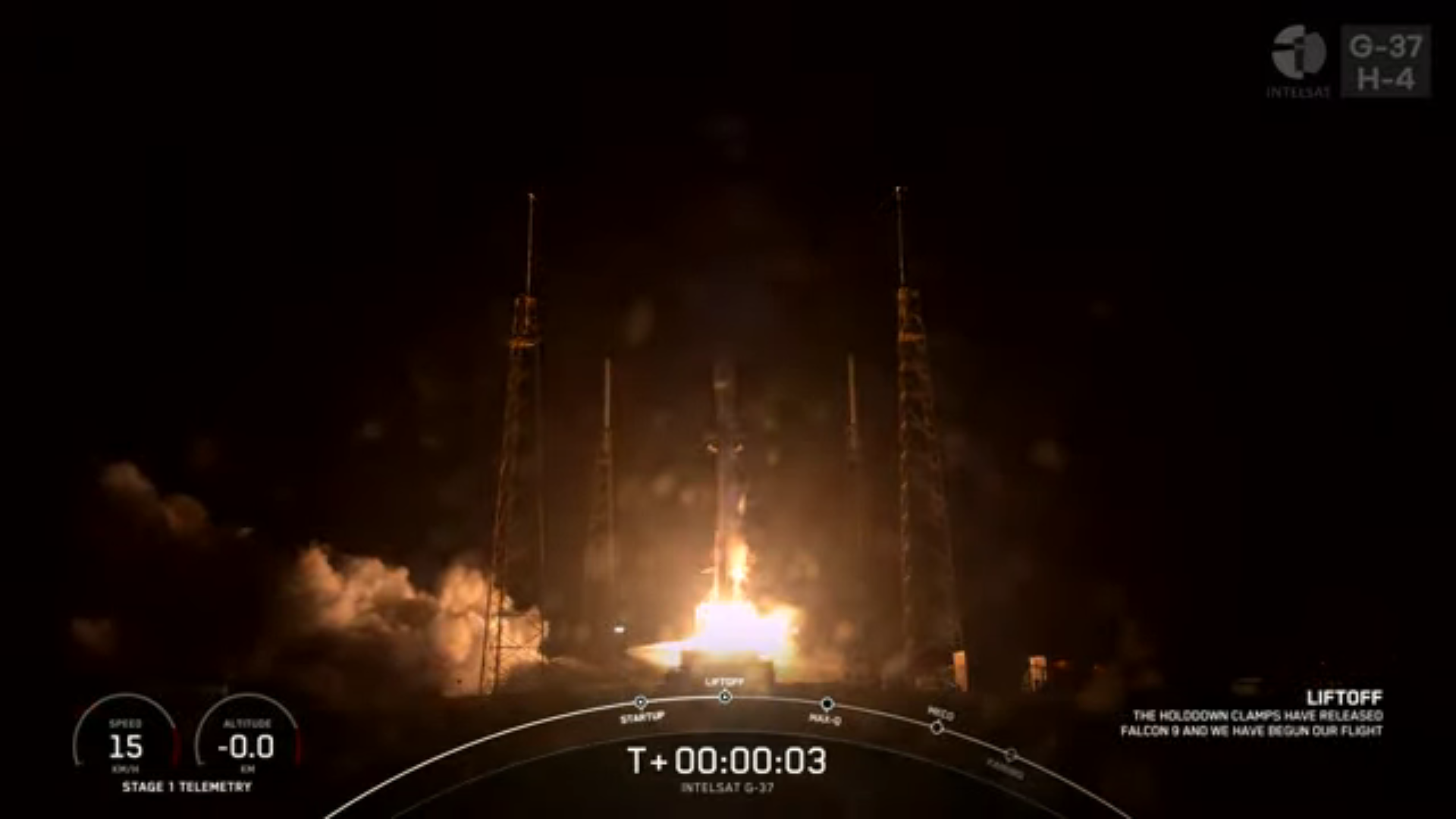
SpaceX has successfully launched its first Falcon 9 of August, a six-times-used booster having powered into the night from storied Space Launch Complex (SLC)-40 at Cape Canaveral Space Force Station, Fla., at precisely 1 a.m. EDT Thursday. Aboard the 230-foot-tall (70-meter) vehicle was Galaxy-37, a heavyweight geostationary-bound communications satellite, flying on behalf of Intelsat.
Targeting liftoff at 12:15 a.m. EDT, at the start of a two-hour “window”, T-0 was pushed back initially to 12:45 a.m. and later 1 a.m., as teams closely monitored the Florida weather. Conditions were predicted to be around 90-percent-favorable, with cumulus clouds and anvils being the only violating factors which threatened to conspire against launch.
Flying tonight’s mission was B1077, making her fifth flight of 2023 and her sixth overall, having entered service last October to lift Dragon Endurance and her Crew-5 complement of NASA astronauts Nicole Mann and Josh Cassada, Japan’s Koichi Wakata and Russian cosmonaut Anna Kikina for a five-month International Space Station (ISS) increment. Since then, she flew four more missions between January and June, delivering 56 Starlink low-orbiting internet communications satellites, a Block III Global Positioning System (GPS) payload for the U.S. Space Force, the geostationary-bound Inmarsat 6-F2 and the most recent Cargo Dragon to the ISS.
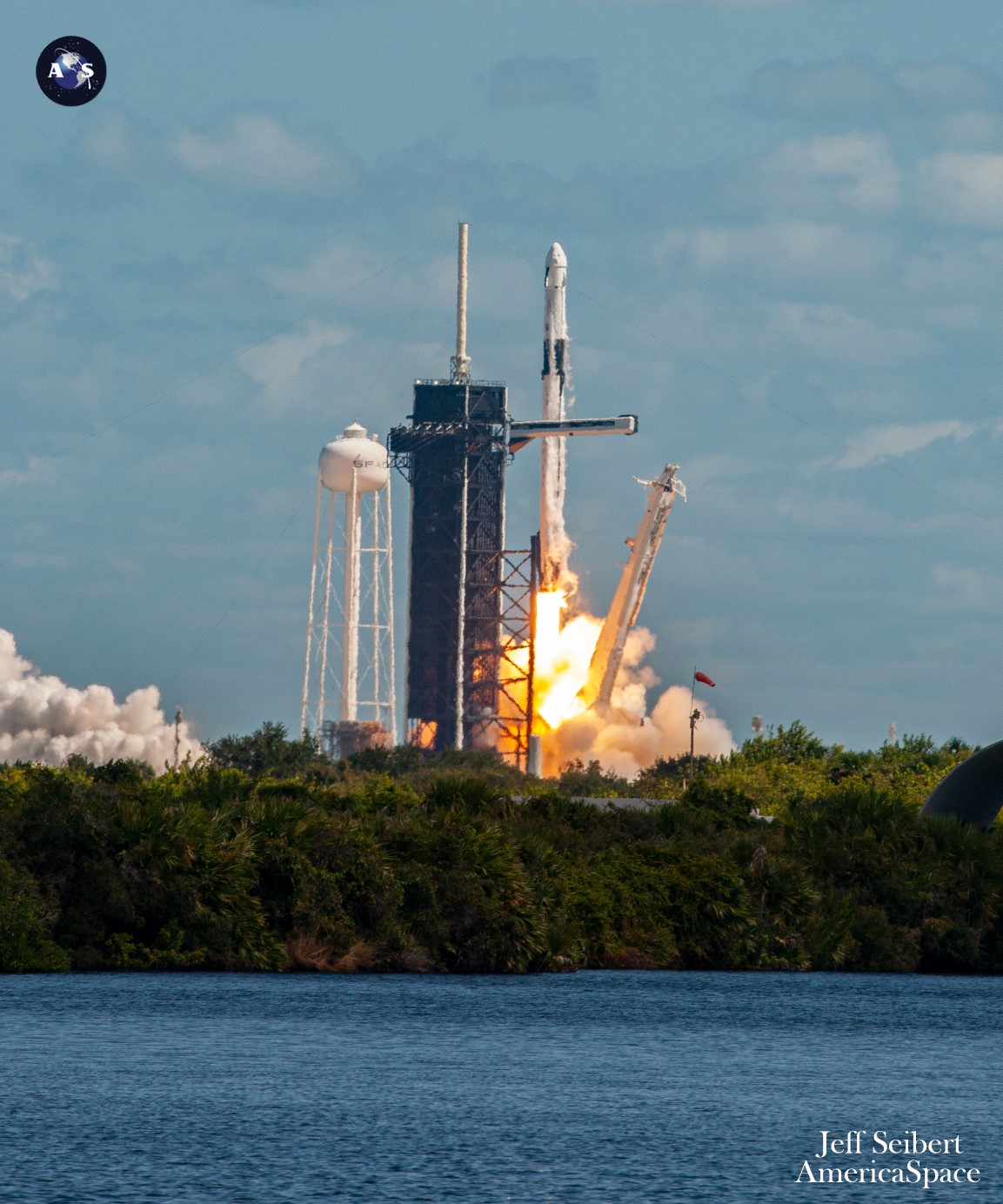
Those missions saw B1077 form half of a pair of boosters which set a new record—now broken—of only nine hours and ten minutes between two Falcon 9 flights. And last March, she closed out SpaceX’s first-ever eight-launch month.
Last night’s flight also marked the 250th launch of a Falcon 9 or Falcon Heavy vehicle, including 243 Falcon 9 missions since June 2010 and seven Heavies since February 2018, the most recent of which took flight just last week. Of that impressive list, the fleet has suffered only a single in-flight failure, with the CRS-7 Cargo Dragon having been lost during first-stage ascent in June 2015.
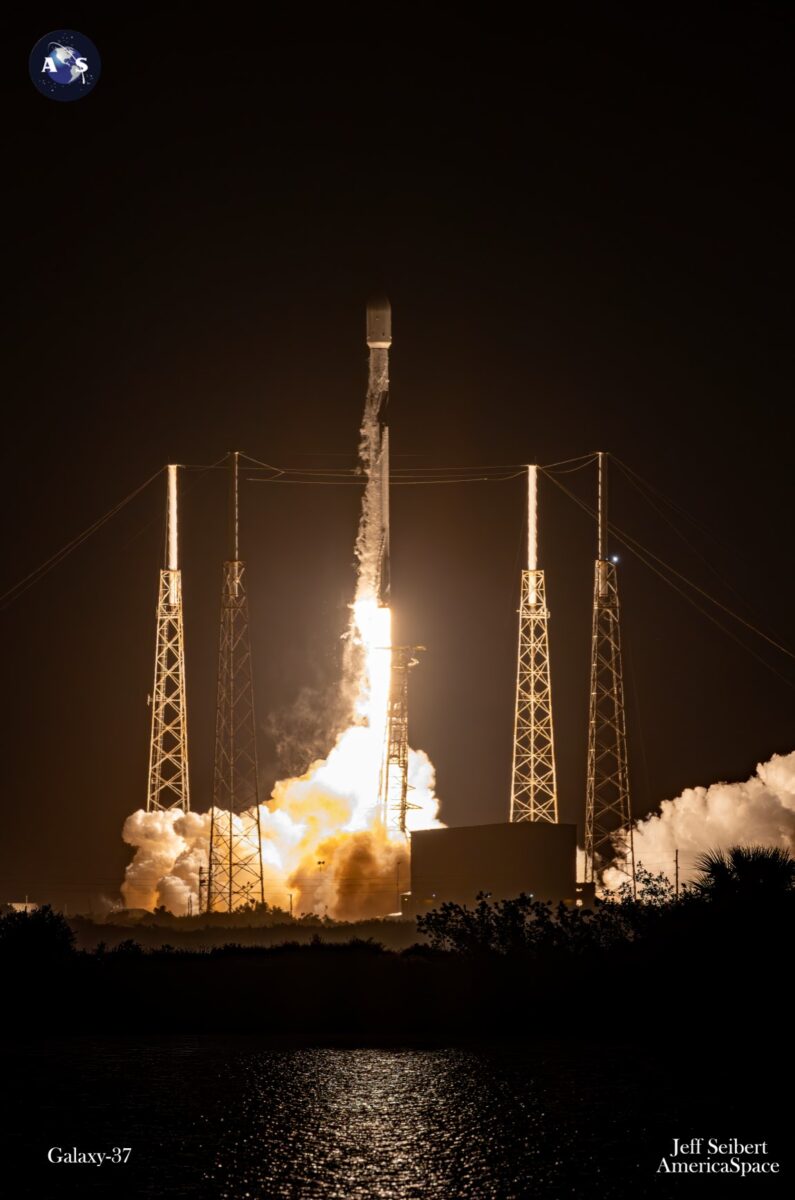
Across that quarter-millennium of missions, 98 dedicated Starlink flights have emplaced more than 4,800 of these flat-packed internet communications satellites into low-Earth orbit. Added to that steadily burgeoning list have been 53 geostationary missions, 28 uncrewed cargo flights to the ISS and ten human-carrying Crew Dragons, including the first all-civilian voyage to low-Earth orbit in September 2021 with Inspiration4.
Several missions have headed far beyond Earth, notably last month’s launch of the European Space Agency’s (ESA) Euclid deep-space observatory. Others have voyaged to lunar distance and in the fall of 2021 the NASA-led Double Asteroid Redirection Test (DART) was lofted on an expedition to the binary asteroid 65803 Didymos to deploy a high-velocity kinetic impactor to impact its tiny companion, Dimorphos.
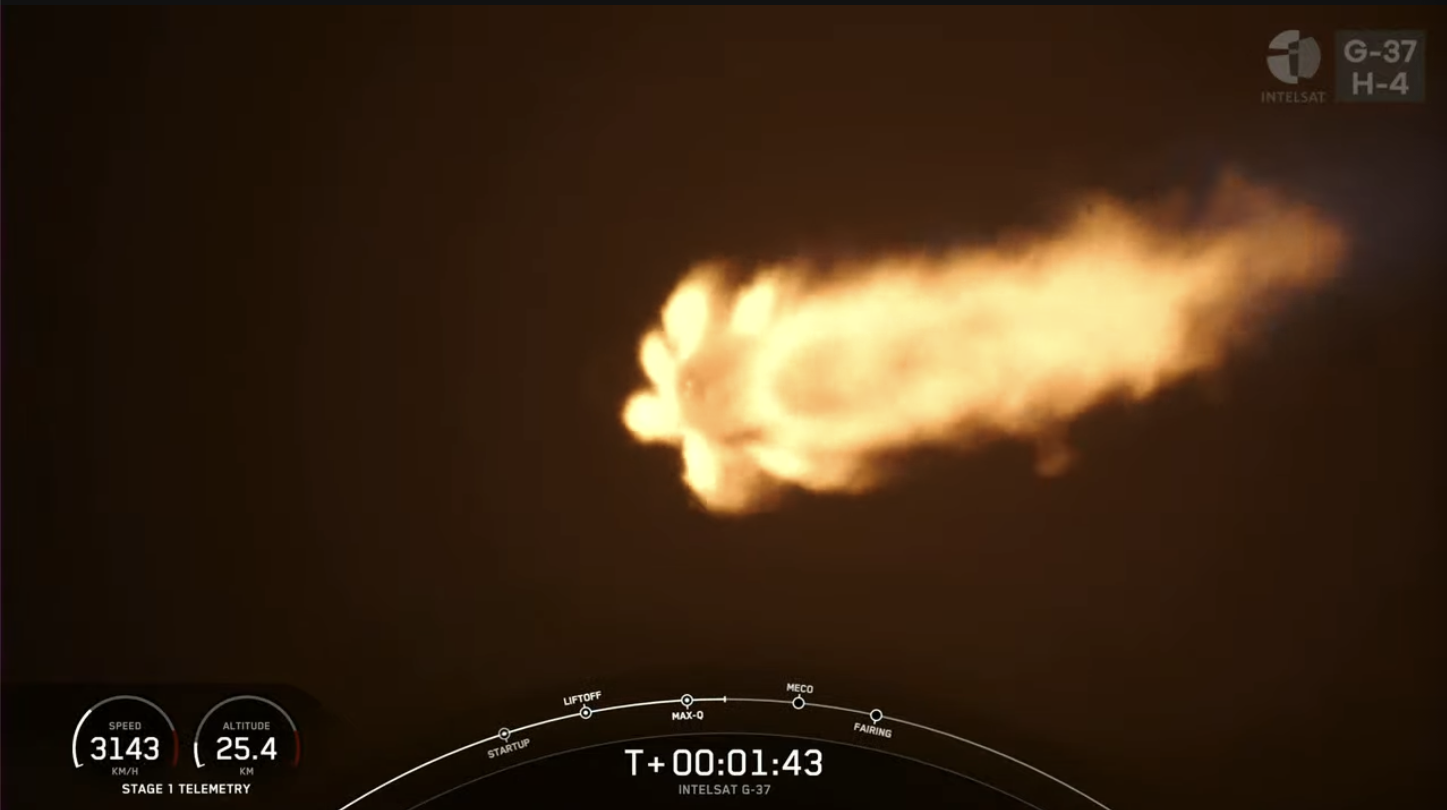
Following the first launch of a twice-flown Falcon 9 in March 2017, the fleet’s reusability statistics have literally skyrocketed, with life-leaders B1058 and B1060 both logging their record-breaking 16th uphill treks only last month. And including last night’s mission, a total of 213 single-stick Falcon 9s or Falcon Heavy core or side-boosters have been successfully recovered on solid ground or on the decks of offshore Autonomous Spaceport Drone Ships (ASDS) in the Atlantic or Pacific Oceans.
In readiness for last night’s flight, the ASDS “Just Read the Instructions” put to sea late last weekend to recover B1077. And only eight-and-a-half minutes after launch, the booster descended smoothly through the darkness to alight on the drone ship’s deck, wrapping up her sixth ASDS landing in less than ten months.
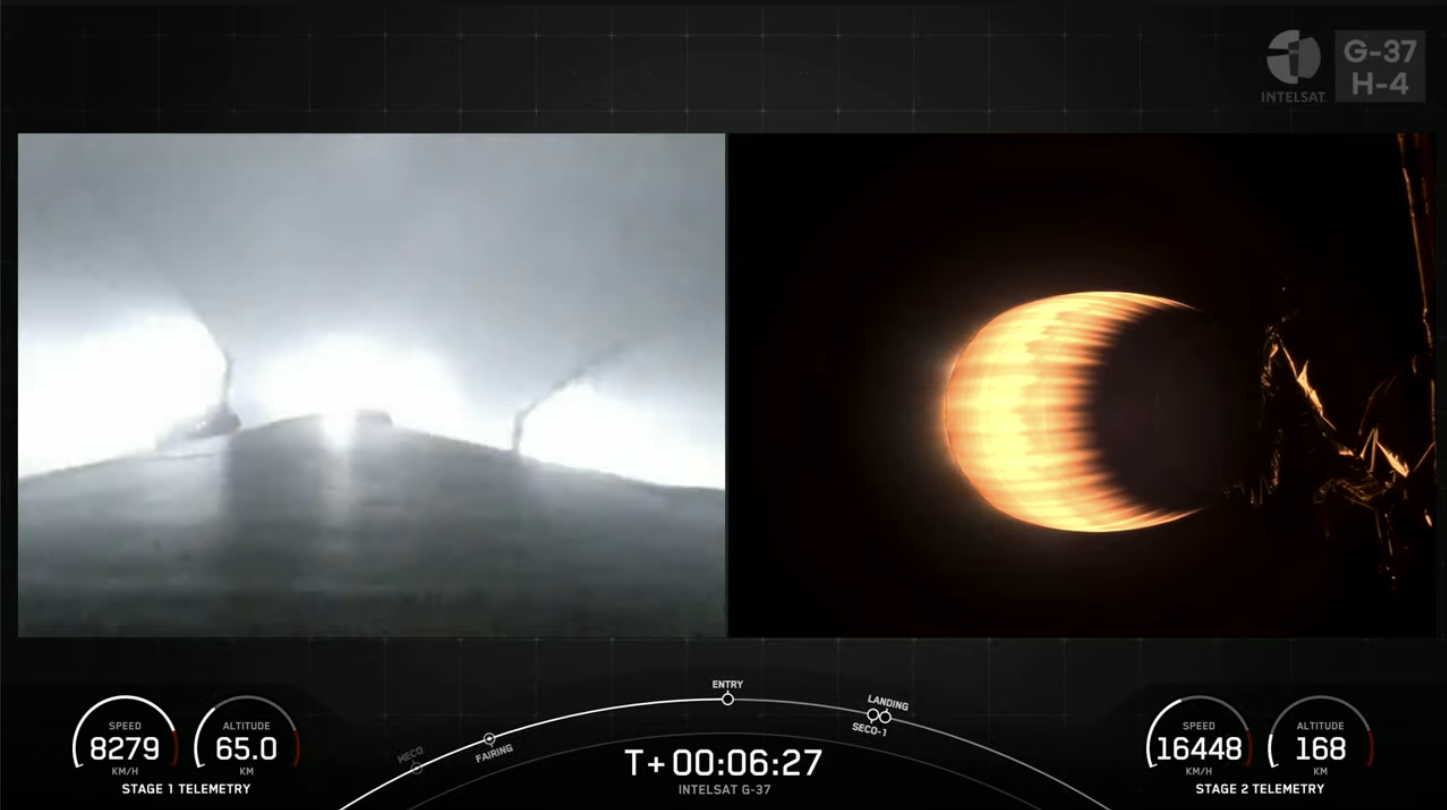
Meanwhile, the single Merlin 1D+ engine of the Falcon 9’s second stage performed a pair of “burns”: the first lasting a standard six minutes, shutting down about 8.5 minutes into the flight, followed by a lengthy coasting phase, ahead of a second firing slightly ahead of payload separation. Thirty-two minutes and 31 seconds after launch, the Galaxy-37 payload was successfully deployed, with an expectation that it will enter active operational service as soon as October.
Built by Maxar on the bones of its SSL-1300 satellite “bus”, Galaxy-37 was originally earmarked to ride Europe’s Ariane 5, before being remanifested aboard a Falcon 9. Its destined orbital “slot” is at 127 degrees West longitude, where it will replace the aging Galaxy-13, which has been in orbit since October 2003 and is rapidly approaching the end of its operational lifetime.
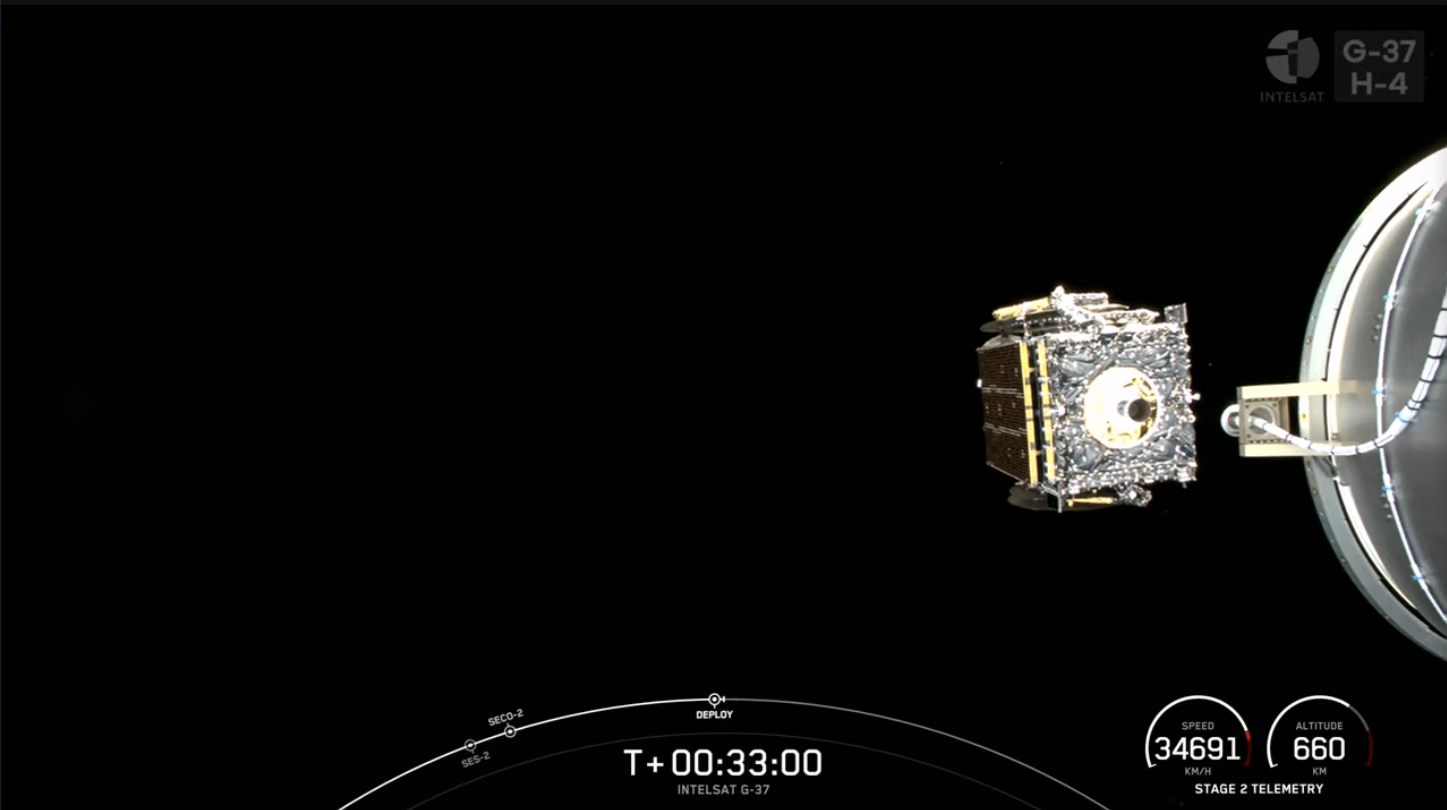
It will mark the fifth Galaxy bird to fly a Falcon 9 within a year, coming on the heels of the dual-stacked Galaxy 33/34 twins last October and Galaxy 31/32 last November. Contracts to build a total of five satellites—Galaxy 31, 32, 35 and 36—were awarded to Westminster, Colo.-based Maxar Technologies, Inc., in June 2020, in furtherance of a Federal Communications Commission (FCC) directive to reallocate 300 megahertz of C-band spectrum to 5G terrestrial wireless services by December 2023, whilst a sixth, Galaxy 37, was contracted to Maxar the following September.
The new satellite is capable of supporting a payload power up to 12 kilowatts, as many as 70 transponders and a total spacecraft mass that tops-out close to 12,000 pounds (5,500 kilograms). In addition to its main role of television media broadcasting and telecommunications services, Galaxy 37 features a Japan-licensed Ku-band payload, known as Horizon-4, which is jointly owned by Intelsat and JSAT International, the U.S.-owned subsidiary of SKY Perfect JSAT Corp. Galaxy-37 arrived on the Space Coast last month for pre-launch processing.




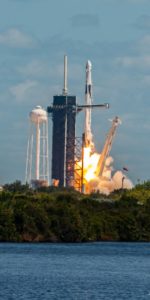
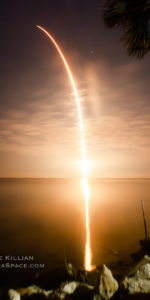
9 Comments
9 Pings & Trackbacks
Pingback:SpaceX Launches Year’s 50th Falcon 9, As Booster Nine Static-Fires at Starbase - AmericaSpace
Pingback:As Falcon 9 Passes Year’s 50th Flight, SpaceX Heads for 50th Vandenberg Launch - AmericaSpace
Pingback:SpaceX Racks Up Four Launches Inside August’s First Two Weeks - AmericaSpace
Pingback:SpaceX Rocks the Space Coast, Looks to Vandenberg Launch Later Tonight - AmericaSpace
Pingback:SpaceX Ends October, Rounds Out Nine-Launch Month - AmericaSpace
Pingback:SpaceX Ends October, Rounds Out Nine-Launch Month - SPACERFIT
Pingback:SpaceX Targets Three Days of Falcon 9 Launches, Starting Tonight - AmericaSpace
Pingback:SpaceX Targets Three Days of Falcon 9 Launches, Starting Tonight - SPACERFIT
Pingback:SpaceX Targets Three Days of Falcon 9 Launches, Starting Tonight - AmericaSpace - Newsivo: Where News Comes Alive